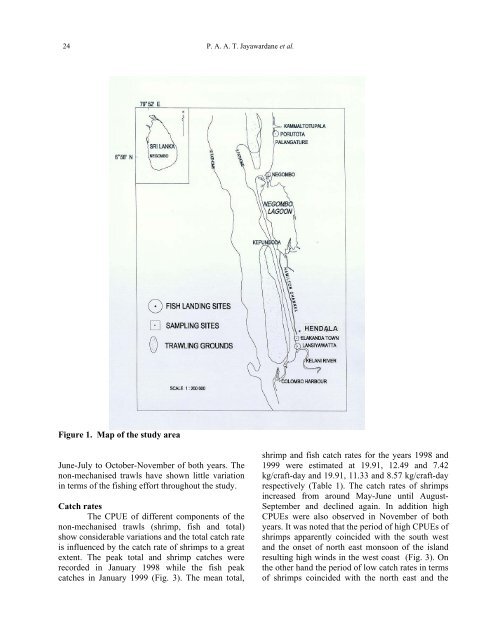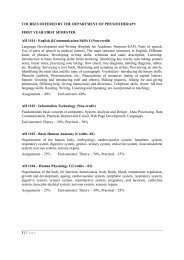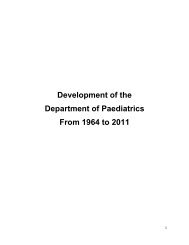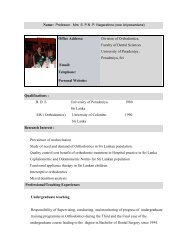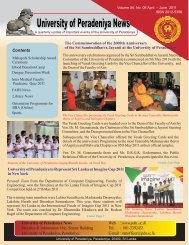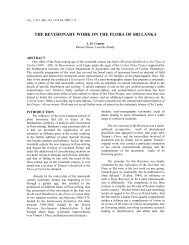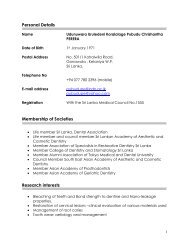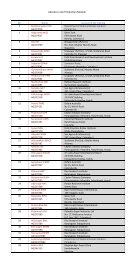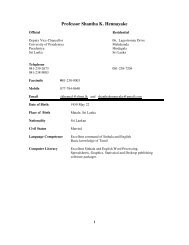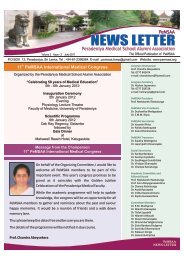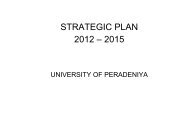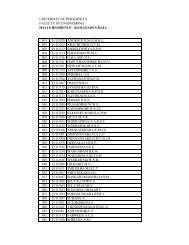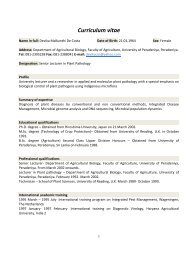PRESENT STATUS OF THE SHRIMP TRAWL FISHERY IN THE ...
PRESENT STATUS OF THE SHRIMP TRAWL FISHERY IN THE ...
PRESENT STATUS OF THE SHRIMP TRAWL FISHERY IN THE ...
You also want an ePaper? Increase the reach of your titles
YUMPU automatically turns print PDFs into web optimized ePapers that Google loves.
24 P. A. A. T. Jayawardane et al.<br />
Figure 1. Map of the study area<br />
June-July to October-November of both years. The<br />
non-mechanised trawls have shown little variation<br />
in terms of the fishing effort throughout the study.<br />
Catch rates<br />
The CPUE of different components of the<br />
non-mechanised trawls (shrimp, fish and total)<br />
show considerable variations and the total catch rate<br />
is influenced by the catch rate of shrimps to a great<br />
extent. The peak total and shrimp catches were<br />
recorded in January 1998 while the fish peak<br />
catches in January 1999 (Fig. 3). The mean total,<br />
shrimp and fish catch rates for the years 1998 and<br />
1999 were estimated at 19.91, 12.49 and 7.42<br />
kg/craft-day and 19.91, 11.33 and 8.57 kg/craft-day<br />
respectively (Table 1). The catch rates of shrimps<br />
increased from around May-June until August-<br />
September and declined again. In addition high<br />
CPUEs were also observed in November of both<br />
years. It was noted that the period of high CPUEs of<br />
shrimps apparently coincided with the south west<br />
and the onset of north east monsoon of the island<br />
resulting high winds in the west coast (Fig. 3). On<br />
the other hand the period of low catch rates in terms<br />
of shrimps coincided with the north east and the


